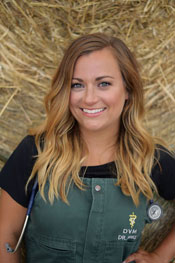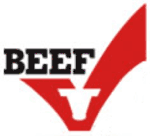
We all know the first question asked when a cow has calved: Heifer or bull? Unless the dairy is specifically breeding for genetics, in hopes of a bull contract or is focused on selling breeding bulls, the answer most dairymen are hoping for is “heifer.” A heifer sets up a dairy with herd replacements and the promise of another top-producing cow.
However, from the time the calf hits the ground, the care this animal is given should not depend on the answer to that “heifer or bull” question. Dairy beef producers and veal growers don’t often receive the bull calf into their care until three to seven days of age. The care given by dairy farmers during the short period of time between birth and this next stage of production is most critical to the overall health of the animal, and ultimately, the quality of meat for consumers.
There are practical, economic and even ethical reasons why bull calves must have the same top-notch care to start their lives.
Being practical
From a practical standpoint, most dairies should deliver, feed and handle their bulls and heifers identically when a cow freshens. Personnel should be trained to get colostrum into the calf within an hour or two, dip the navel to prevent disease and transfer the calf to where it can be clean, warm and dry. Handling a bull with less urgency sets a precedent that shouldn’t be available to calf caretakers.
The National Dairy FARM Program does not distinguish between care of newborn heifers or bulls. Since most of the milk in the U.S. is produced by dairies that follow FARM guidelines, it is important to review the points that make up the management checklist for newborn and milk-fed calves. All calves are born with a naïve immune system and rely 100 percent on colostrum for early immunity. That makes the first point in this checklist critical. Adequate passive transfer of maternal antibodies is essential to protect newborn calves from disease, so, providing colostrum soon after birth is considered a welfare standard for all calves.
The management checklist is as follows:
- All calves receive colostrum or colostrum replacer soon after birth, even if immediately transported off the farm.
- All calves receive a volume and quality of milk or milk replacer to maintain health, growth and vigor until weaned or marketed. Identified animal caretakers are trained in calf care, nutritional requirements and feeding techniques, including the use of esophageal tube feeders and other feeding mechanisms.
- Calves are offered fresh, palatable starter feed.
- All age classes of animals (including milk-fed dairy calves) have access to clean, fresh water as necessary to maintain proper hydration.
- The dairy has written protocols for specific areas of newborn and milk-fed dairy calf management.
- Calves are moved by lifting, walking or using clean, properly designed mechanical transport devices.
- Animal movement and transportation caretakers are trained to handle and restrain calves with minimum stress to the animal.
Once it’s determined whether the bull calf is being raised for beef or veal, it’s also important these calves can meet the Beef Quality Assurance or Veal Quality Assurance standards. That means tracking medication and administering it correctly even if the calves are destined to leave the farm, and paying attention to how they are transported to their next location.
As a veterinarian responsible for the health and wellbeing of veal calves, I have witnessed how significant the quality of care given to a bull calf in the first 24 hours impacts its wellbeing in the weeks and months ahead. Dairy producers can say the same about heifer calves.
Economically speaking
Raising calves is one of the top three costs of a dairy farm, no matter what model you follow – raising them yourself or sending them elsewhere. Whether bull calves are headed for your feedlot, someone else’s feedlot or a veal farm eventually, your pocketbook and reputation depend on having the healthiest, best-growing livestock you can provide.
Dairy beef producers and veal growers often check calves for hydration, navel infections, growth and sometimes even blood protein status to assess passive transfer. All producers want them eating the proper nutrition enthusiastically and recovered from any illness. Depending on the type of farm, vaccination, dehorning and other requirements may be necessary, too. Dehorning and castration are not practiced for veal production, and hormone implants in veal are prohibited. If the calves aren’t meeting those requirements, it won’t be long before the buyer will find another source for calves.
For the beef sector, the consideration of average daily gain (ADG) is vital. The ability to gain efficiently is directly related to passive transfer and early calf care on the dairy. When evaluating ADG progress made by dairy calves, regardless of sex, how the calf is cared for on the dairy farm impacts its potential the rest of its life. Calves that grow faster have the advantage, whether they are headed to the dairy or to a beef or veal farm facility.
Simply put, calves are worth more to everyone in the chain when they’re raised right beginning at birth.
It’s the right thing to do
Rare is the dairyman or woman who doesn’t still feel a bit of joy at the birth of a calf. So regardless of what the answer is to the question “heifer or bull?” – be sure to provide essential care to all calves. Your fellow beef and veal producers appreciate it and so do the calves.
About the Beef Checkoff:

The Beef Checkoff Program (www.MyBeefCheckoff.com) was established as part of the 1985 Farm Bill. The checkoff assesses $1 per head on the sale of live domestic and imported cattle, in addition to a comparable assessment on imported beef and beef products. In states with qualified beef councils, states may retain up to 50 cents of the dollar and forward the other 50 cents per head to the Cattlemen’s Beef Promotion and Research Board, which administers the national checkoff program, subject to USDA approval.
About the North American Meat Institute:
NAMI, a contractor to the Beef Checkoff, is a national trade association that represents companies that process 95 percent of red meat and 70 percent of turkey products in the US and their suppliers throughout America. In addition, NAMI conducts scientific research through its Foundation designed to help meat and poultry companies improve their plants and their products. The Institute’s many meetings and educational seminars also provide excellent networking and information-sharing opportunities for members of the industry.


